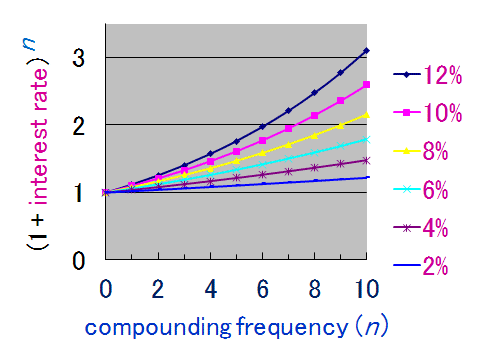Welcome to an explanation of compound interest, critical to transforming your financial future. It has often been referred to as the eighth wonder of the world. This powerful principle is the cornerstone of intelligent investing and wealth accumulation.
This article unravels how compounding can multiply savings and investments, offering a clear path to financial growth and stability. Whether you’re a seasoned investor or just starting, understanding the mechanics and advantages of compound interest is essential in navigating the investment landscape and making your money work harder for you.
Understanding Compound Interest: The Basics
Compound interest is like a financial magic trick. It’s when you earn interest on the money you’ve invested and the interest that money has already made. Over time, this can lead to your investment growing at an accelerating rate.
It’s like rolling a snowball down a hill; it starts small but gets bigger as it moves along, picking up more snow (or, in this case, more money). The longer you leave it, the more impressive the growth. This is why it’s often said that time is an investor’s best friend regarding compound interest.
Compound Interest vs. Simple Interest: What’s the Difference?
The primary difference between compound and simple interest lies in the calculation method. While simple interest is calculated only on the principal amount, compound interest is calculated on the principal plus any previously earned interest. This difference can lead to significantly different outcomes, with compound interest typically providing a higher return.
Compound interest is a fundamental financial concept that refers to earning interest on the initial principal and the accumulated interest from previous periods. This differs significantly from simple interest, which is made only on the principal amount.
Let’s break down the difference between simple interest and compound interest:
Simple Interest:
- Definition: Simple interest is calculated only on the principal or initial amount of money invested or borrowed.
- Calculation: It’s calculated as a percentage of the principal amount. The formula is simple: Interest = Principal × Rate × Time.
- Characteristics:
- The interest amount remains constant over time, as it’s always calculated on the original principal.
- It is commonly used in short-term loans and some types of savings accounts.
Example: If you invest $1,000 at a 5% simple interest rate for three years, each year’s interest is $50 (5% of $1,000), totaling $150 after three years. Simple interest is when you take your interest out and use it somewhere else, avoiding the compounding effect.
Compound Interest:
- Definition: Compound interest is calculated on the principal amount and also on the interest that has been accumulated over previous periods.
- Calculation: It’s a bit more complex than simple interest. The formula is Compound Interest = Principal × (1 + Rate/n)^(nt) – Principal, where ‘n’ is the number of times interest is compounded per year, and ‘t’ is the number of years.
- Characteristics:
- The interest amount increases over time, as it’s calculated on an increasing balance (principal + accumulated interest).
- This is common in long-term investments and savings accounts, where compounding can significantly increase the returns over time.
Example: Using the same $1,000 at a 5% interest rate compounded annually for three years, the first year’s interest is $50, but the second year’s interest is calculated at $1,050, and so on. After three years, the total amount would be more than $1,157.62.
Simple interest is straightforward and constant, calculated only on the principal. Compound interest, on the other hand, is like interest on interest, growing the investment at an accelerating rate over time. Compound interest allows your gains to stay in the account, buy more investments, and grow exponentially.
The Power of Reinvesting: How Compound Interest Works
The real power of compound interest lies in earning interest on interest, which can lead to exponential investment growth over time. This is achieved through reinvesting the earnings. For instance, if you continually reinvest the interest earned on a savings account, the interest for the next period is calculated on the increased balance, leading to bigger gains.
Historical Examples of Compound Interest in Action
Throughout history, compound interest has played a pivotal role in wealth accumulation. Famous investors, such as Warren Buffett, have leveraged the power of compound interest to build substantial fortunes. Buffett’s long-term investment strategy, focusing on reinvesting earnings, showcases the incredible potential of compound interest over time.
“My wealth has come from a combination of living in America, some lucky genes, and compound interest.” – Warren Buffett.
Time is Money: The Role of Time in Compounding
The length of time an investment is held significantly impacts the benefits of compound interest. The longer the investment period, the greater the growth potential. Graphs and charts illustrating compound interest over different periods show that investments grow more rapidly as time passes, highlighting the importance of starting early.

Calculating Compound Interest: A Simple Guide
Calculating compound interest can be straightforward. The basic formula involves the principal amount, the interest rate, and the number of compounding periods. For example, to calculate the compound interest on a $1,000 investment at a 5% annual rate over ten years, you would use the formula A = P(1 + r/n)^(NT), where P is the principal, r is the annual interest rate, n is the number of times interest is compounded per year, and t is the number of years.
Maximizing Returns: Strategies for Leveraging Compound Interest
Strategies such as starting early and making regular contributions are crucial to maximize the benefits of compound interest. Consistency in investing and patience to compound interest are essential to maximizing returns. This approach can significantly enhance the growth potential of your investments.
The Impact of Interest Rates on Compound Growth
Interest rates play a crucial role in the effectiveness of compound interest. Higher rates can lead to more substantial growth over time. Understanding current interest rate trends and their implications is essential for investors looking to maximize the benefits of compound interest.
Common Misconceptions About Compound Interest
There are several misconceptions about compound interest. For example, some believe it only benefits those with significant initial investments. However, compound interest can be advantageous even for smaller investments, especially when combined with regular contributions and a long-term investment horizon.
Starting Early: The Long-Term Benefits of Compound Interest
The advantage of starting investments early cannot be overstated. The longer your investment period, the more time compound interest has to work magic. A small investment can outgrow a more significant investment made later, thanks to the power of compounding over a more extended period.
Compound Interest in Various Investment Vehicles
Compound interest applies to various investment vehicles, including stocks, bonds, and savings accounts. Each option has its pros and cons, and understanding these can help investors choose the right car for their investment goals and risk tolerance.
Compound interest applies to various investment vehicles, but how it works with stocks is different from how it works with bonds and savings accounts.
Let’s break this down:
Savings Accounts and Bonds:
- Savings Accounts: Here, compound interest is straightforward. The interest is calculated on the initial deposit plus any accumulated interest over time. Many savings accounts compound interest daily, monthly, or annually.
- Bonds: For bonds, especially those that pay fixed interest rates, compound interest can apply if the interest payments are reinvested. This reinvestment grows the invested capital over time, similar to how compound interest works in a savings account.
Stocks:
- Capital Gains: Regarding stocks, compound interest is more about compounding capital gains. You’re effectively compounding your investment if you reinvest the profits you make from selling stocks at a higher price than you bought them (capital gains).
- Dividends: Some stocks pay dividends, and portions of a company’s profit are distributed to shareholders. If you reinvest these dividends to buy more shares, you compound your investment again. This is similar to earning interest on interest in a savings account, but it’s dependent on the company’s performance and dividend policy.
Key Differences:
- Performance-Based: The significant difference with stocks is that the ‘interest’ (capital gains or dividends) is not guaranteed and depends on market performance and company profitability.
- Risk Factor: Stocks generally carry a higher risk than savings accounts or bonds. The potential for higher returns with stocks comes with the potential for more significant losses.
While the principle of reinvesting earnings to grow wealth applies across these investment vehicles, compound interest works in stocks through reinvestment of capital gains and dividends, which is inherently linked to market performance and carries different risks compared to traditional compound interest scenarios in savings accounts and bonds.
Tips for Incorporating Compound Interest into Your Investment Strategy
Incorporating compound interest into your investment strategy involves practical steps like diversifying your portfolio, understanding risk management, and consistently reinvesting earnings. These practices can help you effectively leverage compound interest to achieve your financial goals.
Key Takeaways
- Essence of Compound Interest: Earning returns on your initial capital and the accrued earnings from prior periods.
- Exponential Growth through Reinvestment: The investment value significantly increases when profits are continually reinvested.
- Historical Significance: Notable investors have successfully utilized compound interest to amass wealth.
- Duration’s Impact: The longer the investment period, the more substantial the growth due to compounding.
- Simple Calculation Method: Utilizing a straightforward formula to determine the future value of an investment with compound interest.
- Contrast with Simple Interest: Compound interest yields higher returns as it calculates interest on accumulated earnings, unlike simple interest.
- Optimization Strategies: Early investment and consistent contributions enhance compound interest benefits.
- Rate Influence: The growth potential is affected by the prevailing interest rates.
- Dispelling Myths: Compound interest is advantageous regardless of the investment size.
- Early Start Advantage: Beginning to invest at an early stage can lead to more significant long-term growth.
- Diverse Investment Options: Compound interest applies to various investment vehicles with unique advantages.
- Strategic Integration: Incorporating compound interest into your investment plan involves diversification and continuous reinvestment.
- Future Outlook: The evolving landscape of investment and technology continues to influence the application of compound interest.
Conclusion
The magic of compound interest lies in exponentially amplifying wealth over time. This financial phenomenon transforms modest investments into significant assets by earning interest on top of interest.
It underscores the importance of early and consistent investment strategies, patience, and understanding of the dynamics of interest rates and investment options. Embracing these principles can unlock the full potential of compound interest, turning it into a formidable tool for achieving long-term financial prosperity.
Compound interest is a powerful tool in the world of finance and investing. Understanding and effectively incorporating its principles into your investment strategy can lead to significant financial growth. By starting early, reinvesting earnings, and staying informed about interest rates and investment vehicles, you can maximize the magic of compound interest and achieve your financial goals.
